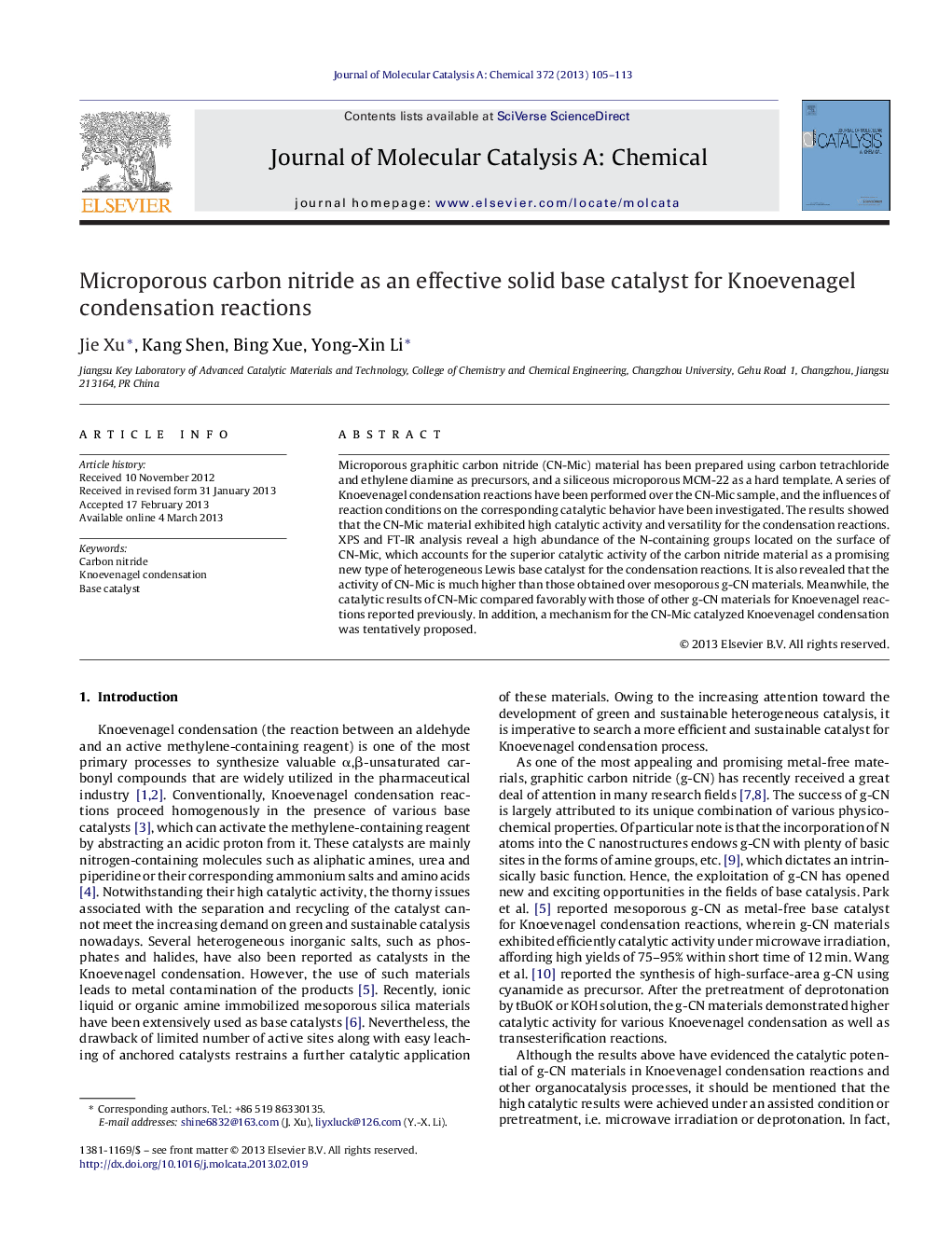| کد مقاله | کد نشریه | سال انتشار | مقاله انگلیسی | نسخه تمام متن |
|---|---|---|---|---|
| 65821 | 48404 | 2013 | 9 صفحه PDF | دانلود رایگان |

Microporous graphitic carbon nitride (CN-Mic) material has been prepared using carbon tetrachloride and ethylene diamine as precursors, and a siliceous microporous MCM-22 as a hard template. A series of Knoevenagel condensation reactions have been performed over the CN-Mic sample, and the influences of reaction conditions on the corresponding catalytic behavior have been investigated. The results showed that the CN-Mic material exhibited high catalytic activity and versatility for the condensation reactions. XPS and FT-IR analysis reveal a high abundance of the N-containing groups located on the surface of CN-Mic, which accounts for the superior catalytic activity of the carbon nitride material as a promising new type of heterogeneous Lewis base catalyst for the condensation reactions. It is also revealed that the activity of CN-Mic is much higher than those obtained over mesoporous g-CN materials. Meanwhile, the catalytic results of CN-Mic compared favorably with those of other g-CN materials for Knoevenagel reactions reported previously. In addition, a mechanism for the CN-Mic catalyzed Knoevenagel condensation was tentatively proposed.
Figure optionsDownload high-quality image (153 K)Download as PowerPoint slideHighlights
► Microporous carbon nitride material catalyzes Knoevenagel condensation reactions.
► Various aldehydes and active methylene compounds can be catalyzed effectively.
► Catalysts readily usable for the catalytic reactions without any pretreatment.
Journal: Journal of Molecular Catalysis A: Chemical - Volume 372, June 2013, Pages 105–113